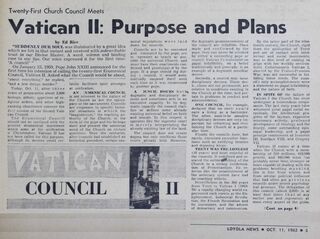Media
What Do You Know? Down the Rabbit Hole of Postmodernism
Part 3: An Examination of Media and Conspiracy Theories in the Postmodern Era
Posted July 9, 2020
In Part 1 of this series, I discussed the illusion of knowledge in the context of COVID-19 and explained how much of what we think we know is actually belief, taken as truth, because it came from a source in which we have faith. Part 2 dealt with the benefits and limitations of a scientific approach to knowledge.
-----
The twentieth century gave rise to a cultural period that would later be called the age of postmodernism. In contrast to the eras that came before — most notably, the Enlightenment — postmodernist thinking challenges the notion of objective truth.
Although most people place the start of the postmodern era somewhere in the 20th century, the seeds of postmodernist thinking were planted in the previous century. Perhaps the most famous of these seedlings was Friedrich Nietzsche's pronouncement in his 1882 book, The Gay Science, that "God is dead... and we have killed him" with "knives" of science and Enlightenment reasoning (Nietzsche, 1974).
The murder of God has had many consequences, but perhaps none more significant than the loss in belief of objective truth and morality. For without a belief in an omniscient God governing all of creation, one must concede that there are many valid perspectives on truth and morality, however, they are all subjective and limited by the biases of each individual observer.
To illustrate this aspect of postmodernist thinking, I give you the example of the Rubik's Cube. There is no single perspective from which a person can look at a Rubik's Cube and see every side of it: The most you can see at once is three sides. You can replace the Rubik's Cube from this example with virtually any object or concept — concrete or abstract — and the same limitations apply because each individual view is constrained by its perspective and biases.

Prior to postmodernism, not only was there a belief in the existence of objective truth but there was considerable faith in societal institutions to disseminate truth to the public. The most influential of these institutions — religion, government, academia (particularly within the sciences) and journalism — are no longer trusted by a large percentage of the population in the same way they once were.
Challenges to the Enlightenment notion of objective truth came from many places in the 20th century, with each challenge laying the groundwork for the new postmodernist worldview that would follow. Though some of the most poignant critiques of objective truth came from the arts and humanities, this article will focus mainly on the sciences and shared cultural events.
Biology: The Biblical account of human origins in the Book of Genesis was upended by the evidence presented in Darwin's Origin of Species in 1859. Though Darwin's findings were initially rejected by the general public, mounting evidence in the 20th century gradually convinced succeeding generations of the legitimacy of Darwin's theory of evolution, thus calling into question preexisting Biblical accounts of human origins, if not all of creation.
Cosmology: Evidence from the most powerful telescopes ever created demonstrated that neither the Earth nor the Sun is at the center of the universe because the universe is still expanding and, according to Hubble's law (c. 1929), it has no center.

Physics: Many advances in physics in the 20th century challenged the existence of objective truth, but perhaps none more than Einstein's theories of general and special relativity. The calculations of general relativity demonstrated that space and time — two fundamental aspects of our existence — are not absolute as once believed, but change in relation to the gravitational forces of other objects nearby. Similarly, special relativity demonstrated that time is not the same for everyone but varies relative to the speed at which one is moving. Moreover, special relativity was also the theory that gave us the most famous equation in science — E=mc2 — which denotes how energy and matter are not static entities but can be converted into each other.
Vatican II: Between 1962 and 1965 the Catholic Church held an important series of conferences known as the Second Vatican Council (a.k.a., Vatican II). Vatican II authorized sweeping changes to the Catholic Church's doctrine, interpretation of Scripture, and church practices. The two changes with perhaps the largest cultural effects were: a) a de-emphasis on Scriptural literalism, with a greater focus on the "spirit" of the Scriptures; and b) the allowance for Catholic mass to be performed in the native languages of local churches (not Latin), thus giving laypersons the ability to interpret the Bible themselves, eliminating reliance on Church authorities for interpretation.

The Pentagon Papers: In 1967, Defense Secretary Robert McNamara secretly commissioned a report detailing the history of US involvement and government policy in Vietnam. This report, later known as the "Pentagon Papers," was kept hidden from the public and then was leaked to the press in 1971. The report revealed that the US government, previously believed to be honest and trustworthy, had lied for decades about its intentions in Vietnam, as well as its goals for the Vietnam War and our progress during the war. The Vietnam War in general, and the "Pentagon Papers" specifically, led to a large scale erosion of faith in the United States government, which was reinforced by the subsequent Watergate scandal.
Communication Technology: Advances in telecommunications throughout the 20th century, including the development of the internet, have led to the rise of citizen journalism. For the first time in history, everyday people now have the power to disseminate information on a large scale that might otherwise be censored by state-run or for-profit media companies.

In some ways, postmodernist thought has been a welcome advance in the evolution of civilization in that it created room in the public sphere for alternative versions of reality that would have previously been suppressed. But in other ways, the effects of postmodernism have led to regressive consequences, providing cover to those who seek to decimate the authority of experts and trusted institutions to advance their own agendas.
Using logical fallacies (like the ad hominem fallacy and the straw man fallacy), propagandists and profiteers have exploited postmodernist arguments in recent decades to attract converts for their own conspiracy theories. Of course, the world has always had its share of conspiracy theorists and snake oil salesmen. However, what's different about the postmodern age is that the media world has been flattened, allowing these individuals privileged access to a level playing field alongside experts who have spent their lives studying a particular subject. In this space, where the loudest voices and most simplified explanations capture the most attention, the information that gets remembered most easily is not always that which is true.
It's not that postmodernism's denial of objective truth is inherently wrong or that the trusted experts of our society haven't made mistakes; it's that the average person lacks an appreciation for the deeper subtleties of the postmodernist perspective and is thus unprepared for the power it bestows. The postmodernist perspective should be wielded with the precision of a scalpel (not the clumsiness of an ax), and if used in this way it can reveal revolutionary insights, propelling our civilization to quantum leaps in progress. However, when the postmodernist perspective is exploited by devious individuals and powerful interest groups to advance their own agendas, it can destabilize our entire civilization, with consequences ranging from the widespread dissemination of racist conspiracy theories, to the delegitimizing of life-saving medical treatments because they were produced by "big pharma," to the undermining of government efforts to combat global crises, like climate change and COVID-19.
The postmodernist landscape ahead is replete with rabbit holes: Some lead to enlightening insights while others lead to regressive conspiracy theories.

Tread lightly, and if you choose to follow Alice's White Rabbit down one or more of these voids, may I suggest you first ask him this: What do you know? His answer should give a clue as to where the rabbit hole leads.
I invite you to read Part 4 of my "What Do You Know?" series, which focuses on the difference between "facts" and "truth" and our increasing reliance on specialists in every field.
References
Nietzsche, F. (1974). The gay science (W. Kaufman, Trans.). New York, NY: Random House.




